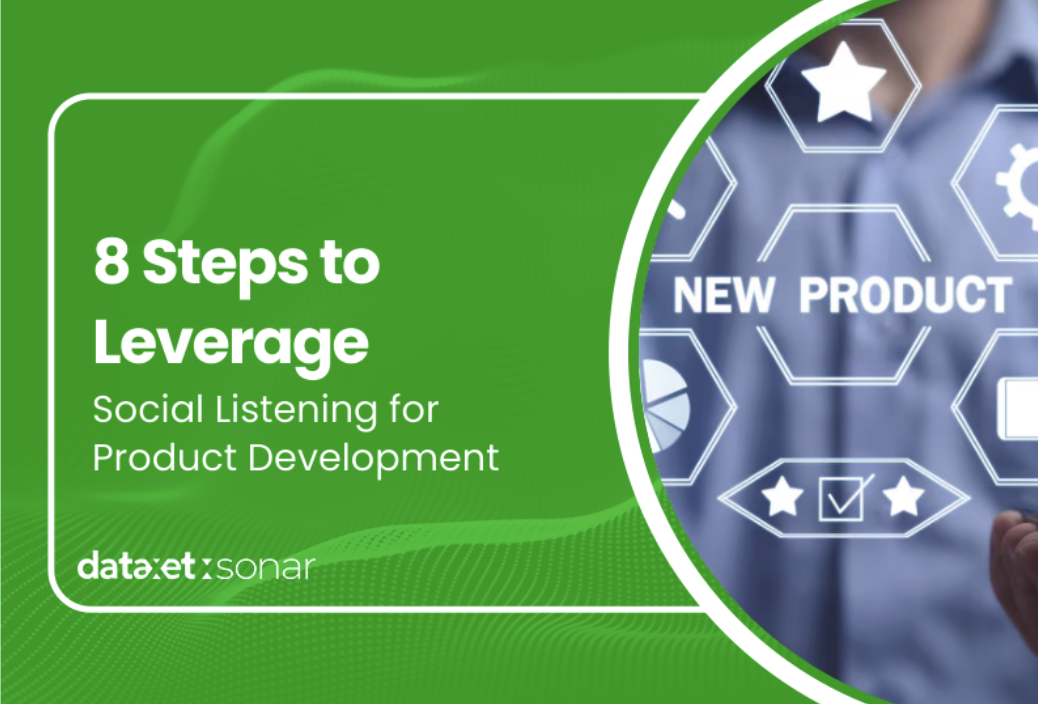In the digital era, consumers no longer express their opinions solely through surveys. They actively speak out on social media, forums, and various online platforms. This is where social listening becomes essential in the product innovation process. By monitoring public conversations, brands can directly understand consumer needs, expectations, and pain points. These insights can be used to validate ideas, refine features, and design new products that are more relevant.
As a platform for media intelligence and social listening, Dataxet Sonar helps many brands capture digital conversations and transform them into actionable insights that support decision-making, including in product development.
1. Defining the Objective of Product Development
Setting a clear direction for product development can be challenging, especially when there is a lack of in-depth market understanding. Through social listening, teams can identify complaints, aspirations, and recurring consumer needs found in digital conversations, enabling the creation of more targeted and relevant product goals.
2. Monitoring Conversations Around Categories or Industries
Limited visibility into industry trends may result in products losing relevance and momentum. With features such as topic overview and trend analysis, social listening helps teams stay informed about ongoing issues and understand how market dynamics are evolving in real-time.
3. Analyzing Sentiment Toward Similar Products
Understanding public perception of competitor products can serve as valuable insight. With social listening focused on sentiment analysis, brands can identify which features are praised or criticized which helping teams learn from competitors’ strengths and weaknesses to strengthen their own offerings
4. Identifying Key Influencers and Communities
Communities and influencers play a significant role in shaping public opinion. Through social listening, teams can identify key opinion leaders who are active within their product niche and understand how their voices influence the acceptance and perception of products.
5. Responding to Feedback in Real-Time
Slow responses to customer feedback can harm a brand’s reputation. Social listening enables teams to monitor mentions and keywords in real time, allowing them to quickly address concerns or issues raised across various digital channels.
6. Segmenting Audiences by Location and Interests
7. Benchmarking Against Competitors
Without clear benchmarks, it’s difficult for brands to understand their product’s market position. Social listening provides comparative insights through competitive analysis, helping teams evaluate performance, perception, and competitor strategies in an objective and data-driven way.
8. Testing and Evaluating Products Continuously
Markets evolve constantly, which means products must also undergo continuous evaluation. Social listening helps teams identify changes in trends and consumer preferences in real time. By monitoring trend analysis, sentiment, and media value, brands can regularly improve and refine their products to stay relevant in a fast-changing landscape.
Conclusion:
Integrating social listening into product development is no longer optional. It’s a strategic necessity for staying relevant in today’s dynamic market. By understanding conversations and trends across digital platforms, teams can respond more quickly and accurately to consumer needs. Dataxet Sonar equips brands with the tools to monitor public discourse across multiple channels and deliver insights through features like trend analysis, sentiment overview, and competitive analysis. Listening to the market means more than observing. It’s about deeply understanding, so you can deliver solutions that truly meet what your customers need.






